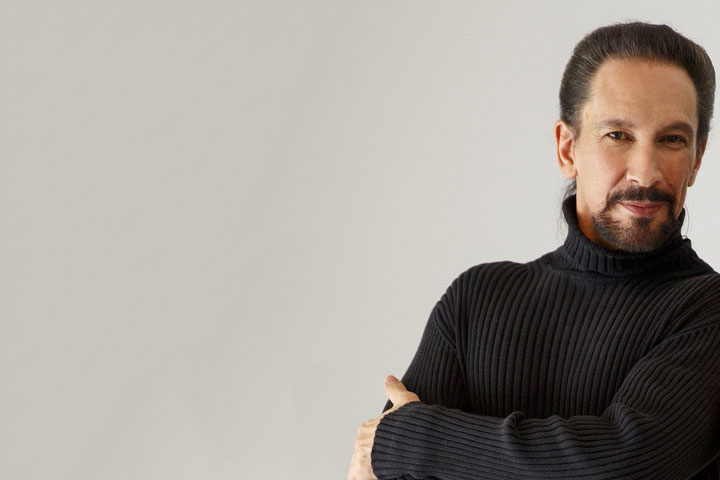On a still raw, wintry evening in early spring, on the fifth floor of an unremarkable annex adjoining Toronto’s opulent Elgin Theatre, Opera Atelier co-artistic director Marshall Pynkoski is running scenes from the company’s eagerly awaited upcoming production, Claudio Monteverdi’s 1640 action-thriller, Il Ritorno d’Ulisse in Patria (The Return of Ulysses). The incongruousness of the setting could not be more pronounced. The rehearsal hall, an open, fluorescent-lit space, workaday and well-worn, is a universe removed from the glittering gilded auditorium next door.
Assembling his practised cast, Pynkoski unceremoniously launches into the first in a series of lively run-throughs, tonight focused on integrating dancers and singer actors into the highly animated flow of key shared events. For the next three hours, the scuffed, linoleum sprung floor rarely stops rebounding. The room throbs with energy. Pynkoski’s passion for exploration and re-invention powers the proceedings. His excitement is contagious.
The Return of Ulysses, plucked from the last half of Homer’s Odyssey by sometime Venetian poet/librettist Giacomo Badoaro, details the tumultuous reunion of the mythic hero with much abused friends and family in the wake of his epic, 20-year seaborne adventures after the Trojan War. Wearing the same swashbuckling black boots he will sport in performance — footwear favoured by several other male members of the cast — dashing, charismatic tenor Kresimir Spicer cuts a valiant figure as he strides forward to string Ulysses’ legendary weapon of retribution, his mighty bow. “Thunder! Thunder!”, shouts Pynkoski from his vantage point at the edge of the playing area. Conductor David Fallis promptly obliges, stormily stamping his feet on his perch atop a hollow plywood riser. Doug Williams, Kevin Skelton and Michael Taylor, the dastardly trio of suitors that has tormented Ulysses’ long-suffering wife, Penelope, crumbles in magnificent poetic agony, slain by a volley of imagined arrows. “Great, great!”, enthuses Pynkoski. “That’s really going to be wonderful!”
Springing to the very end of the production, the entire cast, 12 singers plus a dozen dancers engaged in some 20 different roles, forms into a broad ring. Répétiteur Christopher Bagan, accompanying on harpsichord — an unexpected joy for any visiting Baroque enthusiast — begins to play. Pynkoski cues the swirl of performers.
Linking hands with the rest of the assembled Ithacans, an impressively fleet-footed Maestro Fallis joins in an unexpectedly far-reaching run-through of the grand finale, conductor, singers and dancers all circling to to the interpolated motif Fallis has added to Monteverdi’s imperfectly preserved score. The orchestral air from the composer’s much earlier L’Orfeo interwoven with borrowed passages from a secondary period source makes for a sprightly fit. Pynkoski leans forward in his chair, scrutinizing the action, finessing the finale as it streams past — correcting a misdirected turn, encouraging a more expressive look. “Tell me if I’m doing anything wrong, Jeannette!”, he calls to choreographer and partner, co-artistic director Jeannette Lajeunesse Zingg on the floor beyond.
Virtually all 17th century music theatre ended in some form of communal ballet, Pynkoski later explains, a likely opportunity for the typically rowdy audiences of the era to join in. Venice, where Monteverdi first staged The Return of Ulysses for an extended sold-out run, boasted one of the very first popular, commercial opera houses, the Teatro Santi Giovanni e Paolo. Spirits, bottled and otherwise, undoubtedly ran riot.
“Heads back! Flair your nostrils, gentlemen! This is as happy as it gets!”
Act II. The dancers return. Spurned by Penelope, the suitors stage a diversion in a wilful attempt to soften her heart. The seductive intermezzo that follows, a bright Spanish chacona, another custom arrangement from music director Fallis, sends Lajeunesse Zingg and partners frolicking, flirty castanets snapping. Resident palace reprobates Williams, Skelton and Taylor leer, clutching at flouncing skirts. Pynkoski nods approval.
The director is less pleased with the next scene, however. Pynkoski needs a much bigger reaction from his courtiers to news, ringingly delivered by Aaron Sheehan’s exultant Eumete, of Ulysses’ return. “ When you hear, ‘Ulisse… è vivo!’… he’s alive! That’s a button! You shatter!” An added boost of dramatic adrenalin and suddenly the moment assumes credibly Homeric dimensions.
The last sequence on the evening’s agenda, the shipwrecking of Ulysses and his rescue by the gods, is pure operatic magic.
Four dancers create a raging sea from a vast, undulating square of billowy ocean blue fabric. Rumbling bass-baritone Stephen Hegedus as Neptune angrily stirs beneath. Profane sailors are turned to actorly stone with a wave of his ever present trident. Kresimir Spicer rolls with the waves, a dazed Ulysses washed ashore. Meghan Lindsay’s Minerva offers celestial comfort. Their duet is ethereal.
Taut, elemental, transcendent — it all, quite simply, works. Marshall Pynkoski is beaming.
The Return of Ulysses opens at the Elgin Theatre, April 19. Additional performances April 21, 22, 24, 27, 28.


